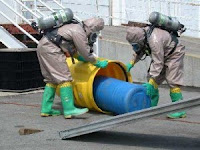
The Occupational Safety & Health Administration or OSHA has made it necessary for employers to provide their employees with a working environment that is as free of risk and hazards, especially chemical hazards. With so many workplace injuries and deaths reported every year, someone had to do something. Ans so OSHA, a regulatory agency, issued a number of standards and regulation for companies across the nation to comply with.
Every workplace has a number of different hazards, ranging from mildly serious to extremely dangerous. OSHA regulates these hazardous materials, and makes it compulsory for employers to provide safety trainings to their employees.
The Hazard Communication Standard or the HCS is probably the most comprehensive regulation issued and is very commonly known as the “right to know” standard. Under the OSHA general industry standard, employers are required to communicate with their employees about the hazards and dangers posed by chemicals that are being used in the workplace. This is generally done through trainings, labeling and signage.
It is the managers or the employers duty to first identify all the hazardous materials present in the facility and to maintain records on the types of hazards found. Suppliers or manufacturers should ideally provide companies with information about the chemical hazards that their products contain by providing them with a Material Safety Data Sheet, or an MSDS. MSDS reviews and management makes it easier to implement safety rules and programs.
Every workplace has a number of different hazards, ranging from mildly serious to extremely dangerous. OSHA regulates these hazardous materials, and makes it compulsory for employers to provide safety trainings to their employees.
The Hazard Communication Standard or the HCS is probably the most comprehensive regulation issued and is very commonly known as the “right to know” standard. Under the OSHA general industry standard, employers are required to communicate with their employees about the hazards and dangers posed by chemicals that are being used in the workplace. This is generally done through trainings, labeling and signage.
It is the managers or the employers duty to first identify all the hazardous materials present in the facility and to maintain records on the types of hazards found. Suppliers or manufacturers should ideally provide companies with information about the chemical hazards that their products contain by providing them with a Material Safety Data Sheet, or an MSDS. MSDS reviews and management makes it easier to implement safety rules and programs.
Comments
Post a Comment